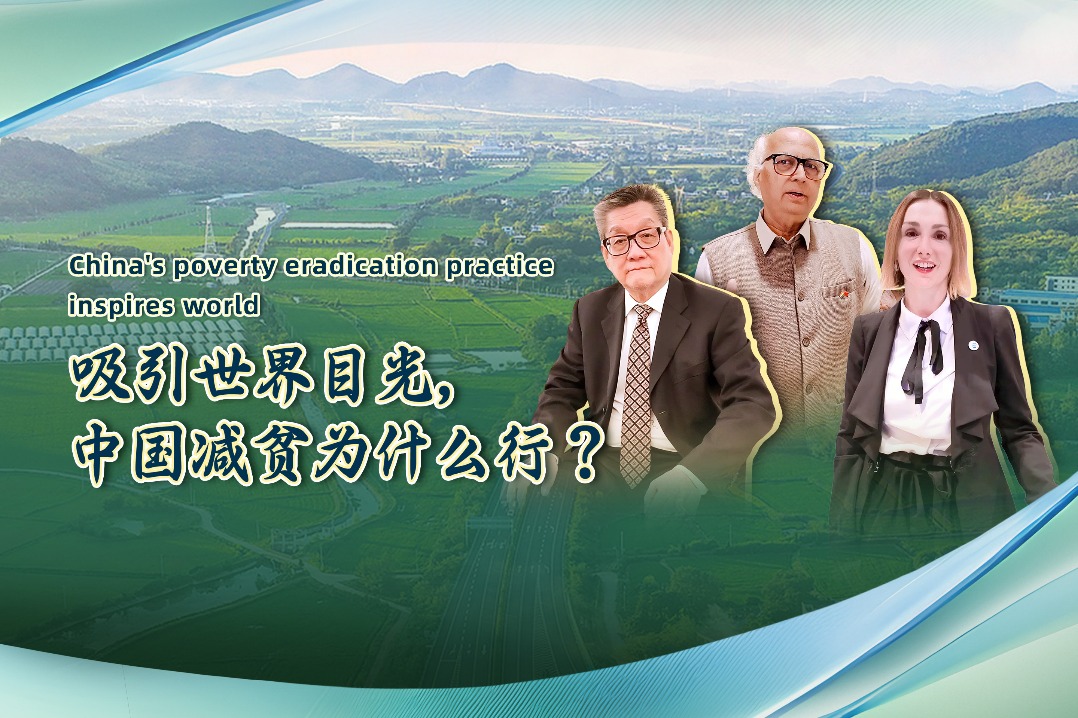An oasis' lessons flow and grow beyond the desert
By Erik Nilsson | China Daily | Updated: 2019-09-09 09:27
It appears like a mirage. But the oasis is, indeed, very real.
And ultimately, it's a truly powerful testimony of the innovative approaches China and Qinghai province are developing to not only protect but also restore Qinghai's fragile environment while improving people's quality of life.
I was shocked when I stood in the middle of a farm in the middle of the desert during a recent trip through the province.
Three years ago, there was nothing there but sand.
But experts discovered and pumped groundwater from beneath the parched earth to satiate greenhouses and orchards producing crops such as melons, sunflower seeds and wolfberries.
At one point, I stood atop an observation tower from which I could see the entire farm - and beyond. It's an island of leaves in a sea of sand.

The edge, where drought-resistant poplars keep the dunes at bay, is a stark line. Green suddenly becomes absolute yellow past the last tree.
The base also contains the skeletons of poplars that grew there as long as 8,000 years ago - when it was a natural, rather than man-made, oasis. The contrast between the past and present seems to point toward the future.
The desertification project produces fruit for the local people.
And it's a demonstration of how approaches adopted in Qinghai operate outside of the popular conception in which environmental protection and human development necessarily exist in conflict and compete within a zero-sum game.
The strategies employed in Qinghai demonstrate that not only are these dimensions not necessarily at odds, but they can actually be mutually reinforcing. That is, such initiatives go beyond balancing these as opposing forces to creating conditions in which they're symbiotic, in which they propel each other in the same direction.
I saw this reiterated in different approaches in other villages - green tourism, sustainable resource exploitation and resettlements in which former herders are paid to protect the grasslands they've left. The relocations, in turn, enable them to enjoy improved livelihoods, transportation and access to services.
This story isn't only important to Qinghai but to the world.
The province hosts a vast swath of the Qinghai-Tibet Plateau, also known as the "planet's third pole" and "Asia's water tower".
Roughly 2 billion people depend on the water systems that begin on the plateau. Many, in particular, rely on freshwater from the "three rivers" - the Yangtze, the Yellow and the Lancang, also known as the Mekong, whose sources are in Qinghai.
The province's ecological health isn't just a regional issue. It's a global one.
And that means environmental initiatives undertaken in Qinghai matter to all of us, everywhere.
I thought about this as I savored a wolfberry that I'd plucked from a bush in the middle of the farm in the middle of the desert and watched the sunset paint pastels above the dunes.
Indeed, this oasis is no mirage. It proves the seemingly impossible is actually possible.
What pours forth from the implausible farm's irrigation system isn't merely water but, ultimately, hope. And that hope flows and grows beyond its borders, across the desert and to every corner of our planet.
























